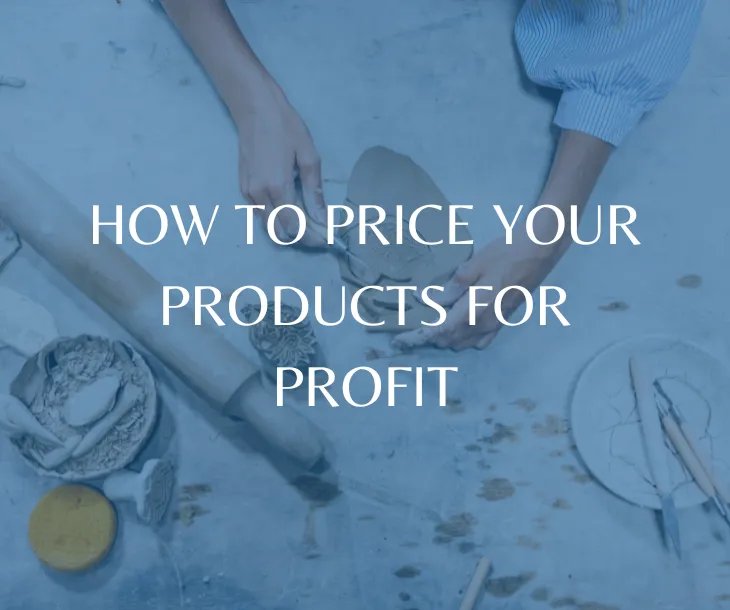THE BLOG!

How to Price Your Products for Profit
Setting the right prices for your Etsy shop can be a complex task. Price too high and you might drive potential customers away, price too low, and you could undervalue your work or even lose money. A smart pricing strategy is essential not only to cover your costs but also to ensure profitability and sustain your business. Here’s my comprehensive guide to developing an Etsy pricing strategy that works for you.
1. Understand Your Costs
The first step in pricing your products is to fully understand your costs. This includes both direct costs (materials, packaging) and indirect costs (Etsy fees, shipping, tools and equipment depreciation). Don’t forget to factor in the cost of your time, how much do you want to pay yourself per hour?
2. Analyse the Market
Research similar products on Etsy to understand the price range within your niche. This will give you an idea of what customers are willing to pay. Being the cheapest isn’t always a winning strategy, especially if it means sacrificing your profit margins.
3. Calculate Your Base Price
Your base price is the minimum you need to charge to cover your costs and pay yourself for the time spent making the product. Use the formula:
Base Price = Material Costs + Labour Costs + Overhead Costs
For labour costs, determine an hourly wage for yourself and multiply it by the time it takes to create one product. Overhead costs can be trickier to calculate on a per product basis but try to estimate them based on a period (like monthly) and then work out what that would be per product based on how many items you think you can sell in that period.
4. Consider Profit Margins
Once you have your base price, add your desired profit margin to come up with a final price. Profit margins can vary greatly, but a good starting point might be around 20-50% above your base cost. This profit is what will allow your business to grow and is your reward for the risks you’re taking.
5. Factor in Etsy Fees
Etsy charges listing fees, transaction fees and payment processing fees. Make sure these are factored into your final price to maintain your profit margins. Use Etsy’s fee calculator or create a spreadsheet to help you keep track of these expenses.
6. Psychological Pricing
Psychological pricing strategies, such as pricing items just below a round number (e.g., £29.99 instead of £30), can make prices seem more attractive to buyers. Experiment with these strategies to find what works best for your products and audience.
7. Test and Adjust
Pricing is not a “set it and forget it” task. Monitor how your products are selling and be prepared to adjust your prices based on customer feedback, changes in costs or shifts in the market. Sometimes, raising prices can actually increase sales if it enhances the perceived value of your products.
8. Be Transparent
Customers appreciate transparency. If your items are priced higher due to quality materials, artisan craftsmanship or other factors, make this clear in your listings. Educating your customers about the value they’re getting can justify higher prices.
9. Bundle Products
Consider offering bundled products for a slightly reduced price compared to buying each item individually. This can increase your average order value while providing customers with a feeling of getting a better deal.
10. Keep an Eye on the Competition
Regularly check in on your competitors to see if and how they adjust their pricing. This doesn’t mean you should constantly change your prices to match or undercut theirs, but it helps to be aware of market trends and perceptions.
Conclusion
Pricing your Etsy products requires a balance between covering your costs, staying competitive and providing value to your customers. It’s an ongoing process that involves research, calculation and sometimes a bit of experimentation. By following these strategies, you can develop a pricing model that supports your business goals, rewards your effort and appeals to your target market. The value of your work is not just in the materials and time but also in the creativity, skill and love you pour into each piece.
Rebecca xx
Are you ready to start your journey? Download my free top tips HERE!
Or follow me on TikTok HERE

